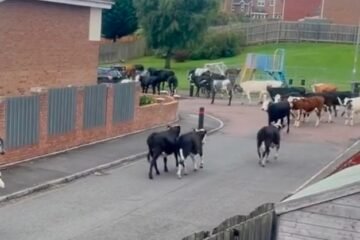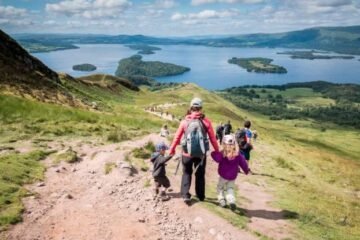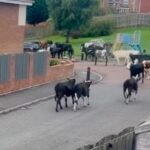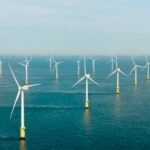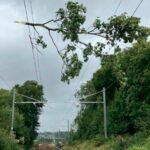It’s not every day you see a river so famous for its salmon fighting to keep even a handful of them alive. But that’s exactly what’s happening on the River Dee in Aberdeenshire — once a world-class fishing spot that brought in millions and taught even royalty to cast a line.
Now, salmon numbers are plummeting, the climate is warming, and a controversial plan to plant trees might just be the last, best hope to cool the waters and save a species on the edge.
A River That Once Teemed With Life
Edwin Third stands on the bank of the River Muick, a tributary of the Dee, watching a herd of stags bask in the Cairngorms sun. Thirty years ago, this same river would have been full of migrating spring salmon leaping over rocks and waterfalls.
Not anymore.
Spring salmon are no ordinary fish. They make jaw-dropping journeys from Scotland’s uplands all the way to the waters off west Greenland — thousands of kilometres each way — only to return home and spawn where they were born. That feat alone should make them untouchable. But it hasn’t protected them.
Temperatures on the Dee’s upper tributaries, where these salmon start their lives, have risen by an average of 1.5°C in just 30 years. Some tributaries have hit 27.5°C — for salmon, that’s near lethal. Anything above 23°C causes serious stress.
One line: the Dee might be beautiful, but for salmon, it’s turning into a death trap.
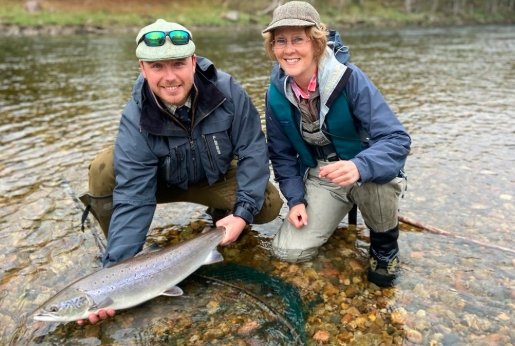
Grim Numbers, Bleak Future
The Girnock Burn, one of the Dee’s key tributaries and the site of Scotland’s longest-running wild salmon monitoring programme, tells a heartbreaking story.
In 1966, 200 female salmon returned there to spawn. Last year? Just one.
Yes — one single female.
It’s not much better elsewhere. The Baddock Burn saw only seven returning females, its fourth lowest count ever. The Dee, once hailed as one of Scotland’s “big four” salmon rivers, is now fighting to keep its “good” conservation status while 72% of rivers across Scotland are already rated “poor.”
One local conservationist called it “catastrophic.” The Missing Salmon Alliance says the decline should be ringing alarm bells in every fishing lodge and country estate that’s relied on salmon for generations.
Can a Forest Bring Back the Fish?
So what’s the plan? Trees.
The River Dee Trust wants to plant hundreds of thousands of native trees along the Dee’s banks and its vulnerable tributaries. The logic is straightforward: trees provide shade. Shade cools the water. Cooler water gives salmon a fighting chance to survive.
It sounds simple, but it’s dividing opinion. Some local landowners worry about losing grazing land. Others fear it’ll change the look and use of the hillsides they’ve farmed for centuries.
Third says he understands the concerns but insists that without tree cover, the river will keep warming — and the salmon will keep dying off.
“People forget just how intertwined salmon are with this whole ecosystem,” he says. “It’s not just fish — it’s birds, insects, people’s livelihoods, the entire river economy.”
A Look at What’s at Stake
Here’s what the River Dee means to Aberdeenshire, in plain numbers:
| River Use | Economic Impact | Notes |
|---|---|---|
| Salmon Fishing | £15 million annually | Boosts local jobs, lodges, and tourism |
| Tributaries at Risk | 300km | Classified as vulnerable to warming |
| Temperature Rise | +1.5°C over 30 years | Pushing salmon to the brink |
| Spring Salmon Return | 1 female in Girnock Burn (2024) | Down from 200 in 1966 |
It’s not just about nostalgic fishermen missing the glory days. The salmon are an indicator species — when they vanish, it signals deeper trouble for the river and everything living off it.
A Royal Connection, and a Call to Action
King Charles himself learned to fly-fish in these same waters, adding a touch of royal history to the Dee’s story. Some locals hope that might help draw more eyes — and funding — to efforts to save the fish.
But trees don’t grow overnight. It could take decades for these shady corridors to mature enough to make a difference. Some conservationists warn it may already be too late for certain tributaries.
One short line: it’s a race against the climate clock.
Will It Be Enough?
As the debate rumbles on, the Dee’s spring salmon are still leaping — but fewer and fewer each year. Some locals see the reforestation plan as the last best shot. Others fear it’s too little, too late.
But for Edwin Third and the teams walking these banks day in and day out, the mission is clear: cool the rivers, save the salmon.
If they don’t, the next generation of anglers could stand by these same streams, casting lines into empty waters where salmon stories used to swim.


